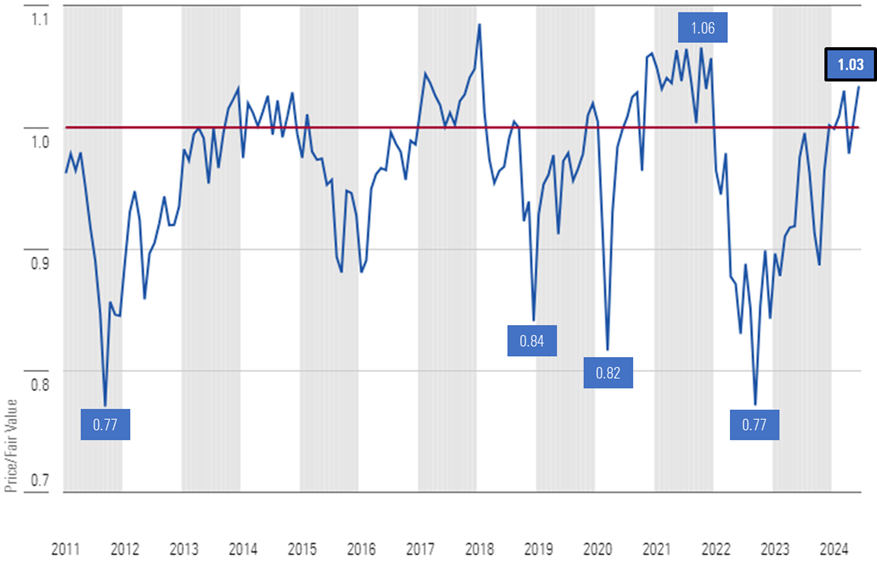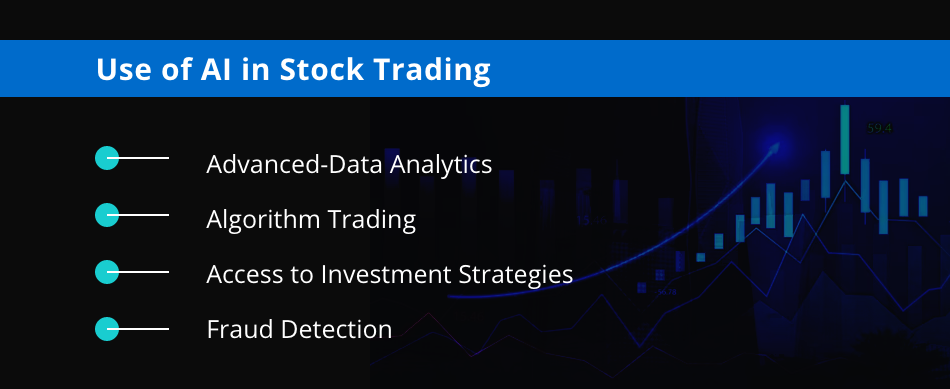20 Best Reasons For Picking AI Stock Prediction Websites
20 Best Reasons For Picking AI Stock Prediction Websites
Blog Article
Top 10 Tips To Evaluate The Integration And Compatibility Of Ai Predictive/Analyzing Trading Platforms
Integrity and compatibility are crucial elements when it comes to evaluating AI platforms for analyzing and predicting stocks. Platforms that are compatible with the existing workflows, tools and systems can boost efficiency and effectiveness. Below are the top ten tips to evaluate compatibility and integration.
1. Check Brokerage Integration
Ensure that your platform integrates seamlessly with the brokerage or trading service you prefer.
Trade execution: Determine whether the platform permits direct trade execution via the integrated broker.
Account synchronization: Determine whether the platform allows synchronization of account balances, positions, and transaction history in real-time.
2. Evaluation of API availability
API access: Check that the platform has an API that developers can use if they would like to automate workflows, or develop custom tools.
API documentation: Ensure the API is properly documented, with use-cases and examples.
Rate limits: Check if the API has reasonable rate limits and can handle your expected usage volume.
3. Integration of Third-Party Tools
Popular tools See whether there is any integrations between the platform and tools like Google Sheets, Excel, or trading robots.
Export and import of data. Check that your platform can export/import data quickly from/to other tools.
Plugins/extensions: Verify if the platform supports plugins or extensions for additional functionality.
4. Test Compatibility with Operating Systems
Desktop compatibility: Make sure that the platform works on your preferred operating system (Windows, macOS, Linux).
Mobile compatibility - Search to see if a platform has a mobile application that is compatible with iOS as well as Android.
Web-based accessibility: To enhance flexibility, make sure that the interface for your platform is accessible via an internet browser.
5. Assess the capabilities of data integration
Data sources: Make sure the platform is able to integrate multiple sources of data, like the market data providers RSS feeds, social media sentiment.
Real-time feeds of data: Check if the platform allows for real-time data integration to give the most current analysis.
Import historical data: Verify if the platform permits importing historical data for backtesting or analysis.
6. Verify compatibility between cloud and on-premise
Cloud-based platforms: Make sure the platform is accessible from any location with an internet connection.
On-premises Solutions: If you would rather deploy on premises, make sure the platform you choose to use is compatible.
Hybrid alternatives: Find out if the platform offers an hybrid model that combines cloud and on-premise capabilities.
7. Check for Cross Platform Syncronization
Device sync. The platform must sync data and settings on every device including mobile, desktop and tablet.
Check for real-time updates to determine the changes made on one device will reflect instantly on the other.
Find out whether it allows access to functionality or data when you're offline.
8. Make sure that the trading strategies are compatible. strategies.
Algorithmic Trading: Check that the platform is compatible with algorithmic or automated trading strategies.
Custom indicators: Determine if your platform supports the use of scripts or indicators that are unique to you.
Backtesting strategy - Check to see if your trading platform supports backtesting with historical data.
9. Review Security and Compliance
Data encryption: Ensure the platform is using encryption to protect data during transit and at rest.
Authentication: Verify if the platform supports authenticated methods that are secure (e.g., two-factor authentication).
Compliance with regulations: Check if the platform is compliant with applicable regulations.
10. Test Scalability and Performance
Scalability: The platform should be able to accommodate increasing volume of data and users.
Performance under load - Check that the platform continues to perform to market conditions with high volatility.
Utilization of resources: Determine whether the system is efficient in using the system resources (CPU, memory, bandwidth).
Bonus Tips
Feedback from users: Read user reviews and testimonials to evaluate the capabilities of the platform to integrate.
Free Trial: Experience the integration of the platform into existing tools and workflows using a trial or demo.
Customer Support: The platform needs to provide solid support for integration problems.
Use these guidelines to evaluate the compatibility and integration between AI platforms for predicting and analyzing stocks as well as your trading systems in place, and ensure they enhance your trading effectiveness. Take a look at the top rated chart ai trading assistant for website recommendations including chart ai trading assistant, chart ai trading assistant, ai for investment, trading with ai, best ai for trading, ai trade, AI stock trading bot free, options ai, ai investment platform, investing ai and more.
Top 10 Tips On How To Evaluate The Updating And Maintenance Of AI stock Predicting Trading Platforms
Assessing the updates and maintenance of AI-powered trading and stock prediction platforms is essential to ensure they are secure, efficient, and aligned with evolving market conditions. Here are 10 top tips for evaluating their updating and maintenance practices.
1. Updates will be provided frequently.
You can check the frequency with which updates are posted (e.g. every week, every month, or once a quarter).
Why: Regular updates indicate active development and responsiveness to market trends.
2. Transparency in Release notes
Check out the release notes for the platform to find out the improvements or changes being implemented.
Why? Transparent release notes demonstrate the platform's commitment to ongoing improvement.
3. AI Model Retraining Schedule
Ask the AI model how often it is retrained.
Reasons: Models have to change to be accurate and current as market dynamics change.
4. Bug fixes, Issue resolution
Tips Determine how quickly a platform addresses bugs reported by users or addresses technical problems.
The reason: Quick corrections to bugs will ensure the platform is reliable and operational.
5. Updates on Security
Tips: Make sure that the platform is constantly updating its security protocols in order to secure the user's data and trading activity.
Why: Cybersecurity is critical in financial platforms to prevent breaches and fraud.
6. Integration of New Features
Tip: See the latest features added by the platform (e.g. advanced analytics or data sources, etc.) in response to feedback from users or market trends.
Why are feature updates important? They are a sign of creativity and responsiveness to the needs of users.
7. Backward Compatibility
TIP: Make sure that the upgrade does not cause any major interruptions to functionality that is already in place or require significant reconfiguration.
Why is that? Backward compatibility is important to ensure smooth user interface transitions.
8. Communication with users during maintenance
TIP: Assess how the platform communicates scheduled maintenance or downtimes to users.
Why is that clear communication builds trust and reduces the chance of disruptions.
9. Performance Monitoring and Optimization
Tips: Make sure that the platform monitors its the performance indicators (e.g., latency, accuracy) and optimizes its systems.
The reason: Continuous optimization of the platform ensures it remains functional and expandable.
10. Compliance with Regulation Changes
Verify if the platform updated its features and policies to ensure compliance with any recent data privacy laws or financial regulations.
The reason: It is crucial to comply with regulations in order to avoid legal liabilities and to maintain trust among users.
Bonus Tip User Feedback Integration
Verify if the platform integrates feedback from users into its maintenance and updates. This shows an attitude towards users and a firm determination to make improvements.
By evaluating these factors by evaluating these factors, you can ensure that the AI-based stock prediction and trading platforms you select are regularly maintained, updated and able to adjust to market conditions that change. View the recommended AI stock price prediction blog for blog recommendations including best ai trading platform, how to use ai for stock trading, best AI stocks to buy now, best AI stocks to buy now, ai share trading, AI stock analysis, ai in stock market, ai software stocks, AI stock predictions, chart analysis ai and more.